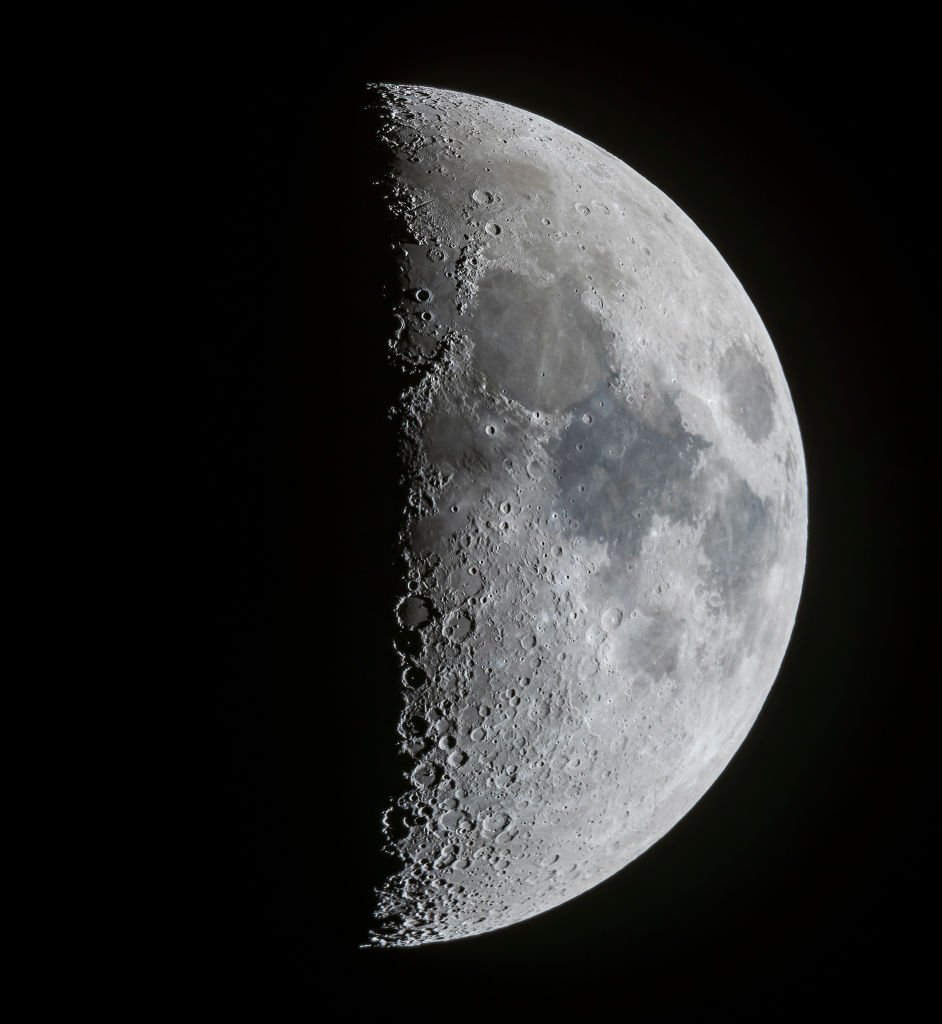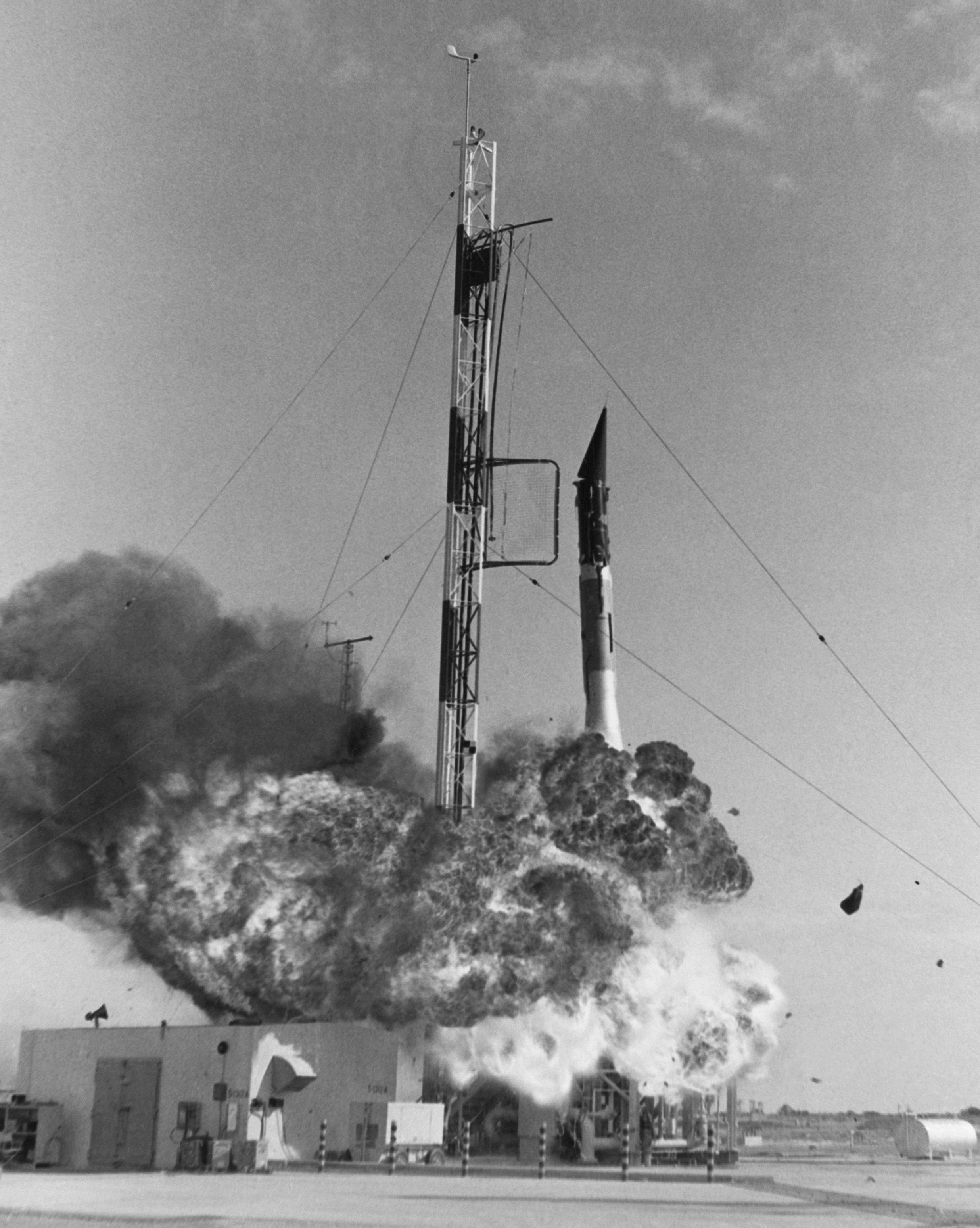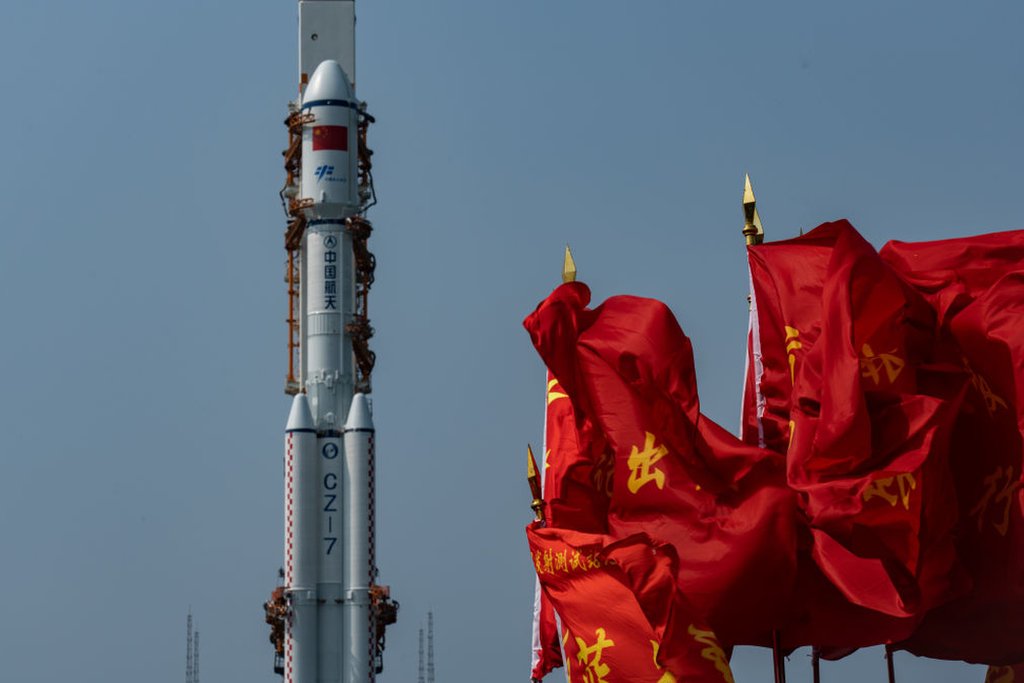But what would happen if the moon that Armstrong stepped on was riddled with huge craters and polluted by the aftermath of a nuclear bombardment?
Let’s explain where this question comes from.
At first glance, the title of a scientific article Lunar Exploration Flight Research, Volume 1 (Study of Exploration Missions to the Moon, Volume 1) sounds mildly bureaucratic and, above all, peaceful. Such a document is easy to ignore. And that was probably the goal.
However, if we look at the cover, things change a bit.
In the center is a shield depicting an atom, an atomic bomb and a nuclear cloud: the emblem Air Force Special Weapons Center at Kirtland Air Force Base, New Mexico, which played a key role in the development and testing of nuclear weapons.
Below is the name of the author: L. Reifel, or Leonard Reifel, one of America’s leading nuclear physicists, who worked with Enrico Fermi, the creator of the world’s first nuclear reactor, known as the “architect of the nuclear bomb.”
This research effort was known as Project A119, a top-secret proposal to detonate a hydrogen bomb on the moon.
hydrogen bombs they were much more destructive than the atomic bomb dropped on Hiroshima in 1945.and the latest development of nuclear weapons of the time.
Between May 1958 and January 1959, Reifel prepared many reports on the feasibility of the project.
Incredibly, one of the scientists who made this terrible plan possible was the future visionary Carl Sagan. In fact, the existence of the project only became known in the 1990s, because Sagan mentioned it in a statement to an elite university.
space battle
Although it is believed that this could help answer some elementary scientific questions about the Moon, the main goal of the A119 project was a demonstration of power.
The bomb will explode on the Moon’s terminator – the border between the light and dark sides of the Moon – and create a bright flash of light that anyone, but especially anyone in the Kremlin, can see with the naked eye. The absence of an atmosphere meant that there would be no nuclear mushroom cloud.



There is only one convincing explanation for such a sinister plan, and his motivation lies between insecurity and despair.
In the 1950s, it didn’t look like the United States was winning the Cold War.
American public and political opinion believed that the Soviet Union was ahead in the growth of its nuclear arsenal, especially in the development and number of nuclear bombers and missiles.
Later it became known that these fears were unfounded, giving rise to what was called “bomb gap” and “missile gap”.
But the United States had reason to suspect that it was lagging behind despite the detonation of the first hydrogen bomb in 1952.
To Washington’s surprise, the Soviets managed to detonate theirs only three years later, and then, in 1957, Moscow made a big jump in the space race by launching Sputnik 1, the first artificial satellite in Earth orbit.



It did not help American nerves that the satellite was launched on a Soviet intercontinental ballistic missile, albeit a modified one, nor that the US’s own attempt to launch an “artificial moon” ended in a huge fiery explosion.
The hell that swallowed his Vanguard rocket was filmed and went around the world. British newsreel of the time was brutal: “VANGUARD IS FAIL… a serious failure in prestige and propaganda…“.
Meanwhile, in American schools, students were shown the famous educational film duck and lid (“The Duck and the Shelter”), in which the live turtle Bert teaches children what to do in the event of a nuclear attack.



Later that year, American newspapers, citing a senior intelligence source it was reported that “The Soviets will bombard H (hydrogen) Moon on the anniversary of the Revolution, November 7(The Daily Times, New Philadelphia, Ohio), followed by reports that the Soviets may already be planning to fire a nuclear missile at our nearest neighbor.
As with other Cold War rumors, their origins are difficult to decipher.
Ironically, this panic probably also prompted the Soviets to develop their plans.
One of them, baptized under the code name E4, it was an exact copy of the American one and ultimately abandoned by Moscow for the same reasons.: fear that a failed launch could cause a bomb to fall on Soviet soil. They described the possibility of a “highly unwelcome international incident”.
Maybe they just realized that landing on the moon was the ultimate prize.
would work
In 2000, Reifel gave his opinion confirming that it was “technically feasible” and that the explosion would have been visible on Earth.
The damage that the explosion would cause to the pristine lunar environment did not bother the US Air Force, despite the concerns of scientists.
“Project A119 was one of several ideas put forward as a shocking response to the satellite,” says Alex Wellerstein, historian of nuclear science and technology. The other was supposed to shoot down a satellite, which looks very vicious. They call them publicity stunts designed to impress people.”



“Eventually they launched their own satellite and it took them a little time, but they continued this project with some seriousness until at least the late 1950s,” the historian said.
For Wellerstein, “it was quite an interesting period in terms of the American mentality of the time. It is necessary that in order to compete, it was necessary to somehow create something very impressive.
“I think that, in this case, cool and terrifying are too close to each otherhe added.
However, he is not convinced that the fear of an anti-communist witch-hunt drove nuclear physicists to work on this project.
“Everyone who has held these positions probably did it because it motivated them to some degree,” he says.
“They didn’t care about getting the job done. If they were afraid, they could do a million other things. Many scientists did this during the Cold War; They said that physics had become too political.
moon focus
Another turning point could have been the Vietnam War, which provoked further soul-searching.
“The A119 project reminds me of a segment from The Simpsons where Lisa sees Nelson’s “Blast the whales with an atomic bomb” poster on the wall and asks, “Blow up the whales with an atomic bomb,” says Bleddyn Bowen, an expert on international relations in space. “And he’s like, ‘Well, you’ve got to blow something.'”



Bowen says it was very serious research, “but it didn’t get funding or attention when it left the space community. They were part of the space fever of the late 50s and early 60s. before anyone knew exactly what nature the space age would take“.
“If something like this lunar hysteria occurs again, it will go against the established international legal order … with which almost all states of the world agree,” he says.
Can these plans resurface despite international consensus?
“I heard some noise from several places and from the Pentagon that the US Space Force is looking into missions to explore the lunar environment,” says Bowen.
Although the point is, if some of the most outlandish ideas don’t catch on in America, this does not mean that they cannot be successful in other countrieslike Chinese.
“I wouldn’t be surprised if there is a community in China that wants to promote some of these ideas because they think the Moon is cool and they work in the military,” Bowen adds.
Most details of Project A119 remain shrouded in mystery. Apparently, many of them were destroyed.
However, the biggest lesson we learned was perhaps that we should never pass by a research paper with a nondescript bureaucratic title, at least without first reading it.
You can now receive notifications from BBC Mundo. Download the new version of our app and activate them so you don’t miss out on our best content.
Source: La Opinion
Alfred Hart is an accomplished journalist known for his expert analysis and commentary on global affairs. He currently works as a writer at 24 news breaker, where he provides readers with in-depth coverage of the most pressing issues affecting the world today. With a keen insight and a deep understanding of international politics and economics, Alfred’s writing is a must-read for anyone seeking a deeper understanding of the world we live in.
